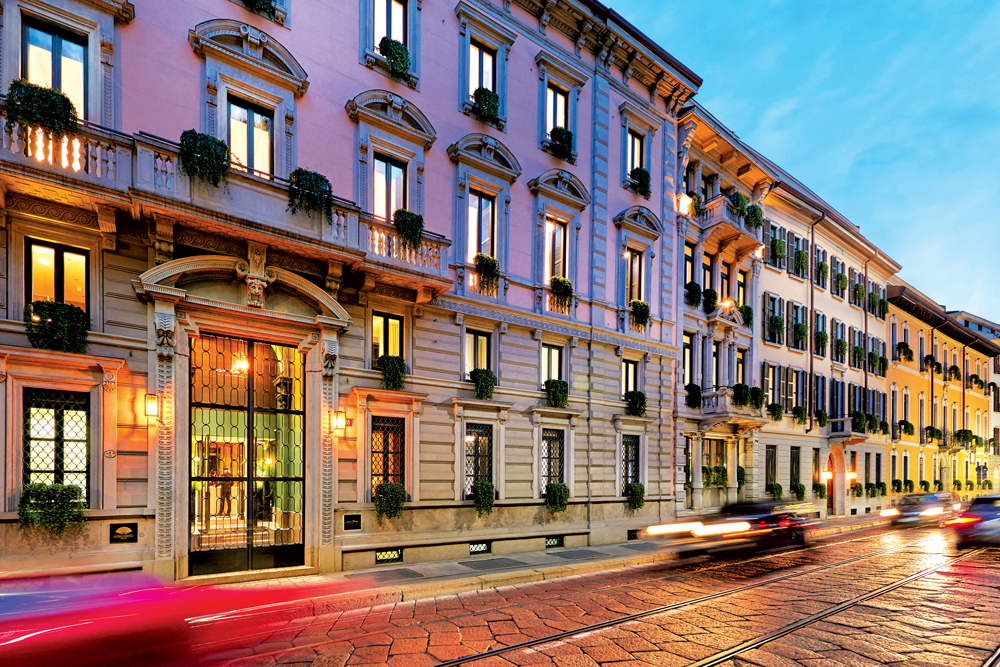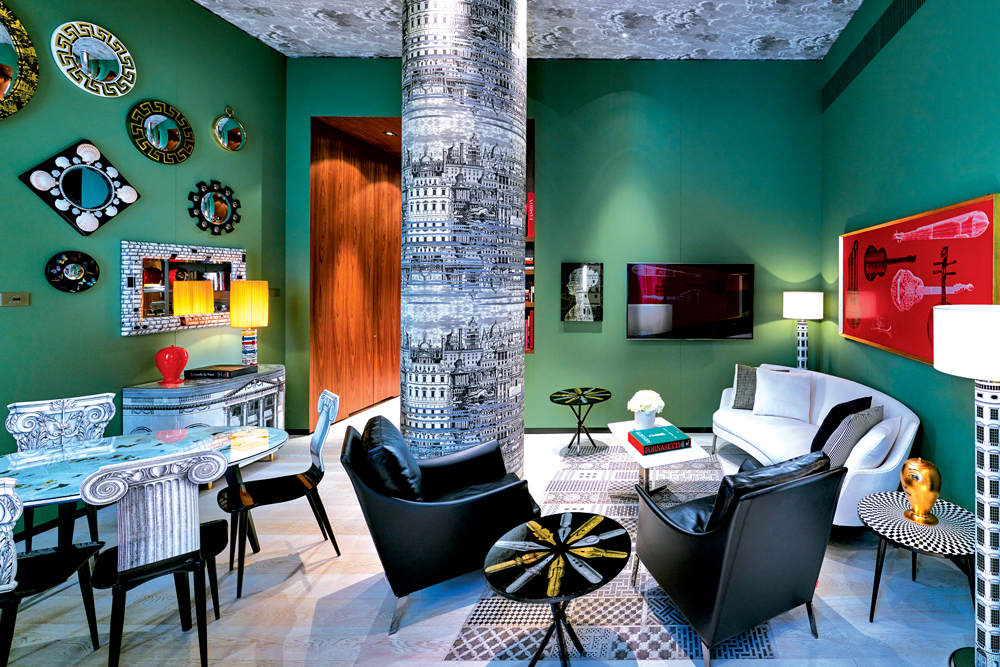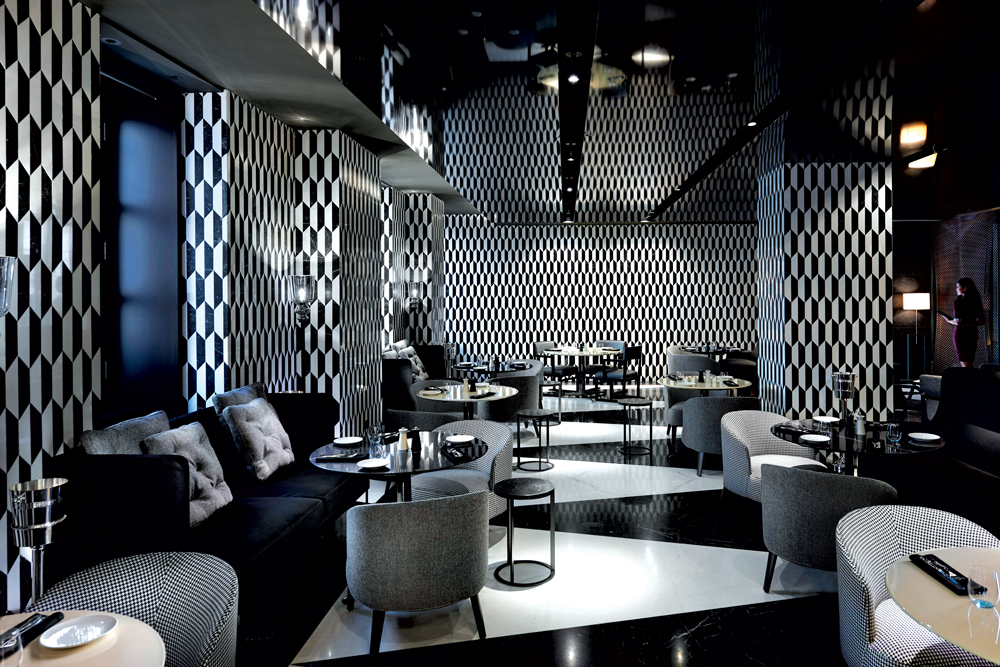A Stay at Milan's Mandarin Oriental Hotel
Jul 25, 2017

The Mandarin Oriental, Milan opened in 2015, becoming the youngest establishment belonging to the half-century-old Mandarin Oriental Hotel Group. The new hotel is quintessentially European, occupying four 18th-century buildings. The interiors were remodelled but the facades were left as they were.
The buildings have served various purposes over the years. One was a manor house in the 19th century, one a tax office from the 1930s to the 1950s, and one a bank in the 1960s. On the outside, the hotel looks like any other set of restored old buildings in Milan but inside is another world.The interior is no ordinary Mandarin Oriental, muffled by plush velvet sofas and deep-pile carpets. Citterio-Viel & Partners Interiors supervised the restoration of the buildings. Being a distinguished Milanese firm, they sought inspiration from the typical dimora Milanese or Milanese stately residence. The designers used colours such as red, green and pastel yellow. The wood, the marble and all the other materials in the interiors come from northern Italy. But the designers added to the decoration classic Asian touches typical of Mandarin Oriental hotels, such as representations of orchids and Japanese maple leaves. Each of the four buildings had different characteristics before they were united to serve as a hotel, so each room is unique. Walking along the corridors, it is obvious when you are leaving one of the four buildings and entering another because the floor levels in one building differ from the floor levels in the next. In days of yore, the dignitaries that lived in a dimora Milanese usually lived on the lower floors, and their servants occupied the higher floors – climbing stairs being beneath the dignity of the masters. This arrangement also meant rooms on the lower floors, and the second floor in particular, had much higher ceilings than the rooms on the higher floors.

In those days, unlike now, living on a higher floor indicated lower status. If you like high ceilings, reserve a room on the second floor of the Mandarin Oriental, Milan. Tucked away on the second floor of the hotel is the Milano Suite. The suite is decorated floor to ceiling with designs by Piero Fornasetti. The designs juxtapose perfectly modern Italy and the Italy of old, so the suite reflects the heritage of the buildings and their renewal. Fornasetti designs are seen more commonly on crockery, so being surrounded by them – on the wallpaper, the tables, the chairs, the sofa and even the bathtub – is a rare experience.The Mandarin Oriental, Milan has two courtyards, together containing its pride and joy. One courtyard gives access to the Mandarin Bar and Bistrot, the beating heart of the establishment. The black and white mosaic of hand-cut marble in the courtyard is Instagrammable. The cool geometry of the marble surroundings is complemented by a myriad of reflective surfaces – an acknowledgement of the creativity of modern design in Milan. The bar itself is quite a contrast. The floor is laid with cobblestones, and the furniture is made of woven materials. The rusticated facade bears coats of arms from the history of Lombardy.

Entering the bar is like travelling back in time, yet the journey is quite effortless.Every visitor to Italy should observe the custom of the aperitivo, or cocktail hour. Around 7pm people flock to the Mandarin Bar and Bistrot to ease the stresses of the day with drinks, snacks and conversation. The cocktails are mixed creatively and with oriental touches. They go with four kinds of food, equally creatively prepared, and served on a slate. The idea is to cultivate your appetite so it is ready for dinner. But a new slateful of food comes with every round of drinks, so you must beware, in case you spoil your appetite. The other courtyard in the hotel contains Antonio Guida’s Seta restaurant, which has two Michelin stars. The reputation of Seta is such that eating there is often the main reason for a visit to the hotel. The restaurant offers simply the best reflection of the core of Guida’s gastronomic philosophy. The chef has his roots in southern Italian region of Apulia. He combines his knowledge of the cuisine there with influences that long stays in Tuscany and France have had on his cooking. The Seta menu lists dishes prepared with refined techniques that enhance the superb quality of the ingredients. Guida does a culinary balancing act, highlighting the original flavour of each element in a dish, and combining them creatively in singular ways. After dinner, you can return to the Mandarin Bar and Bistrot for a nightcap or two of the finest grappa or amaro Italy has to offer.

The bar is open until 2am. This being Milan, a centre of power in the world of fashion, you should bring your shopping list. A three-minute walk away from the Mandarin Oriental, Milan are the Via Montenapoleone and the Via della Spiga, the glitziest shopping streets in the city. Another two minutes brings you to the spectacular Duomo di Milano, a 600-year-old cathedral and one of the most wondrous sights. The Mandarin Oriental, Milan is a home away from home for the weary traveller. And a most pleasant home it is. As modern as it is inside, the establishment invariably reminds the guest of the passing of 200 years or more of Milanese history within its walls. It is a humbling reminder.
This article originally appeared in the July 2017 print issue of #legend magazine.

























